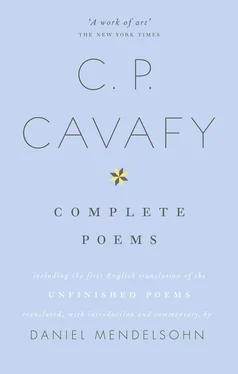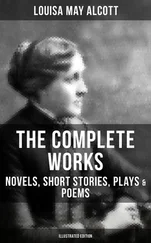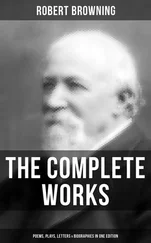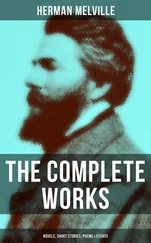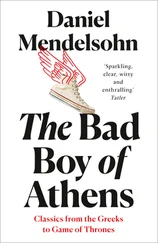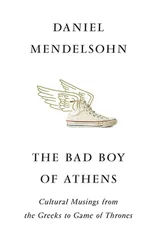1 ...6 7 8 10 11 12 ...27 Roses from rubies, pearls into lilies,
amethyst violets. Lovely the way that he sees,
and judges, and wanted them; not in the way
he saw them in nature, or studied them. He’ll put them away
in the safe: a sample of his daring, skillful work.
Whenever a customer comes into the store,
he takes other jewels out of the cases to sell—
. . . .
And in another poem of virtually the same period, “Painted,” written in 1914 and published in 1916, the theme of the superior powers of Art is again stressed. Here, however, it is not natural life but a beautiful boy who becomes the object of Art’s transformative, and in this case healing, power:
In this painting, now, I’m looking at
a lovely boy who’s lain down near a spring;
it could be he’s worn out from running.
What a lovely boy; what a divine afternoon
has caught him and put him to sleep.—
Like this, for some time, I sit and look.
And once again, in art, I recover from creating it.
Another twenty years later, the theme of the artist’s observing gaze and creative powers as the indispensable vehicles for both an emotionally charged reverie and a creative commemoration has its most sublime expression in the magnificent late poem “Days of 1908,” published the year before the poet’s death. Here, the beautiful but down-at-the-heels young Alexandrian, full of his schemes to make, win, or borrow money (a character we have met before, to be sure), never dreams, as he strips for his seaside swim, that the beauty by which he may well end up making his living will be immortalized in unimagined ways by the poem’s anonymous speaker. Or, rather, by Time itself, since the “you” to whom this speaker addresses himself is, in fact, the days of the long-past summer of 1908:
Your vision preserved him
as he was when he undressed, when he flung off
the unworthy clothes, and the mended underwear.
And he’d be left completely nude; flawlessly beautiful;
a thing of wonder.
His hair uncombed, springing back;
his limbs a little colored by the sun
from his nakedness in the morning at the baths,
and at the seashore.
The hotly yearning heart, with its ambitions, its strivings; the coolly assessing mind, to which those yearnings can appear so puny, even absurd, when measured against the epic forces of history and time and chance. Beauty, yes—the red lips, the jasmine skin, the sapphire eyes: but we can only know that beauty, know about the red and jasmine and sapphire, because of the assessing, measured gaze of the observing artist who beheld and touched and looked; and remembered. The rich, perfervid, sensuous present of most lives is lost forever to recollection: only the living memory of that past, memory that is itself alchemized into something permanent, and permanently beautiful, by poetry, “preserves” them forever. The past and the present; the past in the present. Small wonder that Cavafy, toward the end of his life, insisted that “plenty of poets are poets only, but I am a historical poet.” Those last two words are one way of rendering what he said in Greek, which was piïtís istorikós; but the adjective istorikós can also be a substantive, “historian.” There is no way to prove it, but I suspect that what he meant was precisely what his work makes clear: that he was a “poet-historian.”
THE READER WHO takes the time to immerse himself in Cavafy’s rich and idiosyncratic poetic world should be aware of certain technical features, not least because they raise questions about the aims and strategies of any given translation.
One of the techniques of which Cavafy made use to convey the suggestive interplay of past and present so important to his work is one that poses particularly thorny difficulties for the English translator. As a Greek author writing at the turn of the last century, Cavafy had available to him two quite different registers of the language: demotic Greek, the vernacular spoken by the people, and the far more formal Katharevousa, or “pure” Greek, the high language of literature, intellectual life, and officialdom. (The accent falls on the third syllable.) This artificial form of the language, invented at the turn of the nineteenth century by an eminent literary and political figure who had studied Classics, grafted much of the vocabulary and many of the more complicated grammatical forms of Classical Greek onto the everyday language as a means of “purifying” it of non-Greek elements that had accreted during centuries of foreign influence and occupation; its adoption was, therefore, a political gesture as much as anything else. Katharevousa became the official language of the state, and was used in newspapers, official publications, and government edicts. It was, moreover, de rigueur in institutions of higher learning.
Katharevousa savored, then, of official culture, the classical past, and high art. (To Forster, it “has tried to revive the classical tradition, and only succeeds in being dull.”) Just as Cavafy began writing, however, katharevousa—after having achieved preeminence over the years as the primary vehicle for literary expression, one increasingly characterized by an elaborate diction and style—was being rejected by the so-called Generation of 1880, a literary movement led by the prolific poet, dramatist, and critic Kostas Palamas, who advocated the use of demotic in literature. Cavafy’s earliest works were written in katharevousa, but in the early 1890s he had begun using demotic; the unpublished poem “Good and Bad Weather” (1893) was the first poem written entirely in demotic.
And yet he often chose not to write entirely in demotic. A distinctive feature of Cavafy’s style—perhaps the distinctive feature—is that he continued to mingle katharevousa diction and grammar (as well as pure Classical Greek words from time to time, to say nothing of citations from ancient texts) with demotic. The result is a poetry that has a unique and inimitable texture, very often plain and admirably direct but starched, too, with a loftier, more archaic and ceremonious language—like the talk of a fluent and charming raconteur (like Cavafy himself) that is sprinkled with locutions from the King James Bible. For this reason, it is a mistake to overemphasize, as many critics and admirers (and translators) have done, the laconic plainness of Cavafy’s diction; such an emphasis fails to convey the frequent strangeness of the diction, the “unique and cunning alloy,” as the great English travel writer and Hellenophile Patrick Leigh Fermor so marvelously put it in his essay “Landmarks in Decline,”
in which the fragments of legal diction and ancient Greek and inscriptions on tombs and old chronicles—one can almost hear the parchment creak and the flutter of papyrus—are closely haunted by the Anthology and the Septuagint; it is contained in a medium demotic perversely stiffened with mandarin and beaten at last into an instrument of expression which is austere and frugal in the extreme.
Those strange irruptions of mandarin stiffness deserve to be heard. When, in “Philhellene,” Cavafy ends a monologue by a vulgar eastern potentate—eager to indulge in superficial shows of Hellenic style despite that fact (which his monologue inadvertently betrays) that he is crassly disdainful of its substance—with an awkward shift into Classical Greek (on the word “unhellenized,” no less), he tells us more about the speaker’s pretensions than a laborious exposition could.
The deployment of this hybrid language—a verbal expression, you could say, of that larger and abiding fascination with margins, amalgams, cultural “alloys”—is, indeed, crucial for the interpretation of many poems. Two examples, one from a poem that treats a contemporary erotic theme, the other from a poem with an ancient setting, will help illuminate Cavafy’s subtle technique, while showing my own strategies for rendering them in English.
Читать дальше
